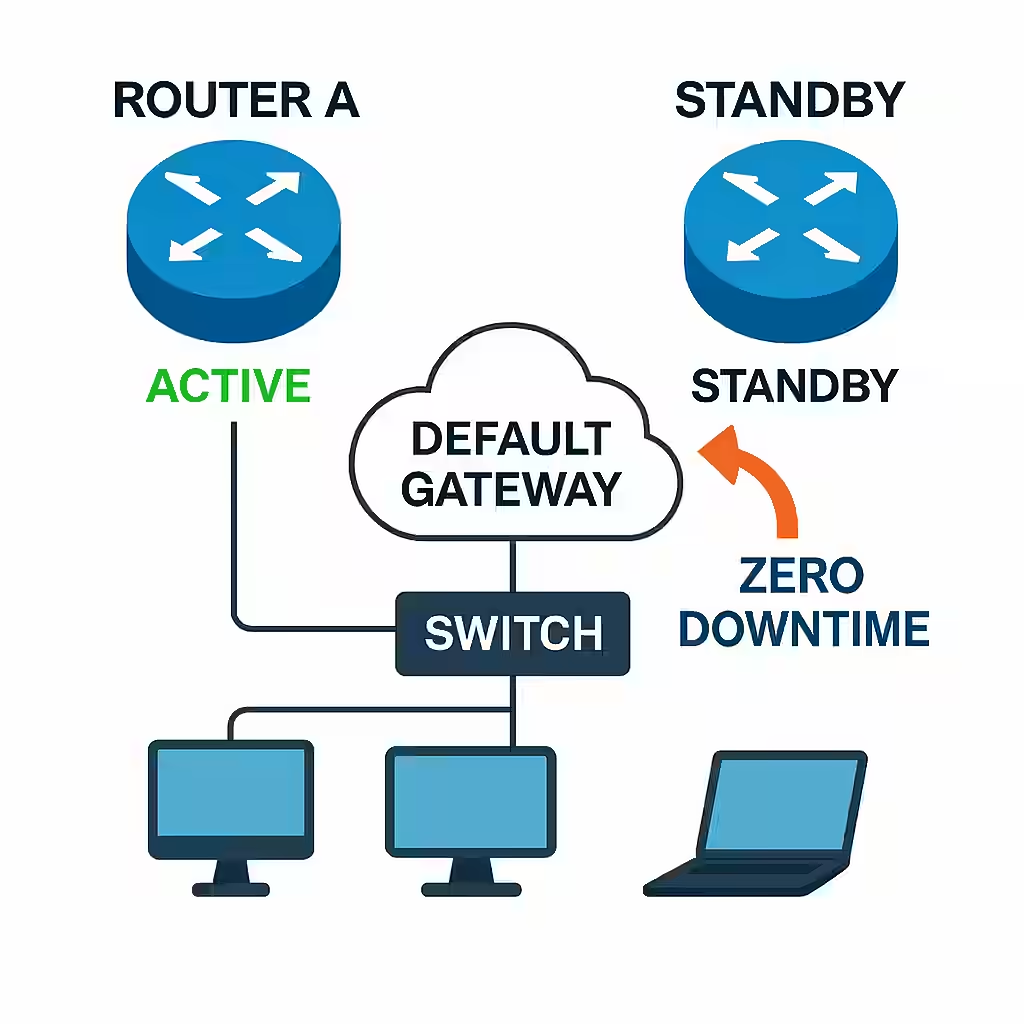Downtime is the nemesis of modern enterprise networks. Whether it’s caused by hardware failure, software bugs, or human error, even a few minutes of network outage can disrupt operations and cost businesses real money. High availability (HA) techniques aim to eliminate single points of failure and ensure uninterrupted network services.
What Makes a Network “Highly Available”?
High availability doesn’t just mean having extra equipment—it’s about designing the network so that if one component fails, others can instantly take over without disruption. This is done using a combination of physical and logical redundancy, failover protocols, and software enhancements.
Key Concepts
Redundancy
Redundancy involves deploying duplicate network elements—like routers, switches, links, and power supplies—to serve as backups in case of failure.
- Link Redundancy: Multiple uplinks prevent isolation of network segments.
- Device Redundancy: Backup routers or switches ensure uninterrupted routing and switching.
- Path Redundancy: Multiple data paths maintain connectivity if one route fails.
First Hop Redundancy Protocol (FHRP)
End devices rely on a default gateway for outbound traffic. If that gateway fails, without FHRP, traffic halts. FHRP introduces a virtual IP address shared between two or more routers.
- HSRP (Hot Standby Router Protocol) – Cisco proprietary, uses an active/standby model.
- VRRP (Virtual Router Redundancy Protocol) – Open standard, similar to HSRP.
- GLBP (Gateway Load Balancing Protocol) – Cisco proprietary, offers load balancing and redundancy.
Stateful Switchover (SSO)
SSO enables a router or switch with dual route processors to seamlessly switch from a failed active processor to a standby one without interrupting traffic.
- Function: Synchronizes configuration and forwarding information between processors.
- Use Case: Most effective in modular switches and high-end routers with redundant supervisors.
Considerations for Implementing High Availability
- Critical Path Identification: Focus HA designs on links and devices that handle essential traffic.
- Failover Time: Minimize downtime by using fast convergence protocols and SSO.
- Load Sharing: Where possible, use GLBP or similar methods to balance traffic across redundant paths.
- Cost vs. Benefit: High availability often requires more hardware—ensure it aligns with business impact and budget.
- Maintenance: Plan for software upgrades and changes without full network outages.
Config Sample: HSRP Basic Setup
interface GigabitEthernet0/1
ip address 192.168.10.2 255.255.255.0
standby 1 ip 192.168.10.1
standby 1 priority 110
standby 1 preempt